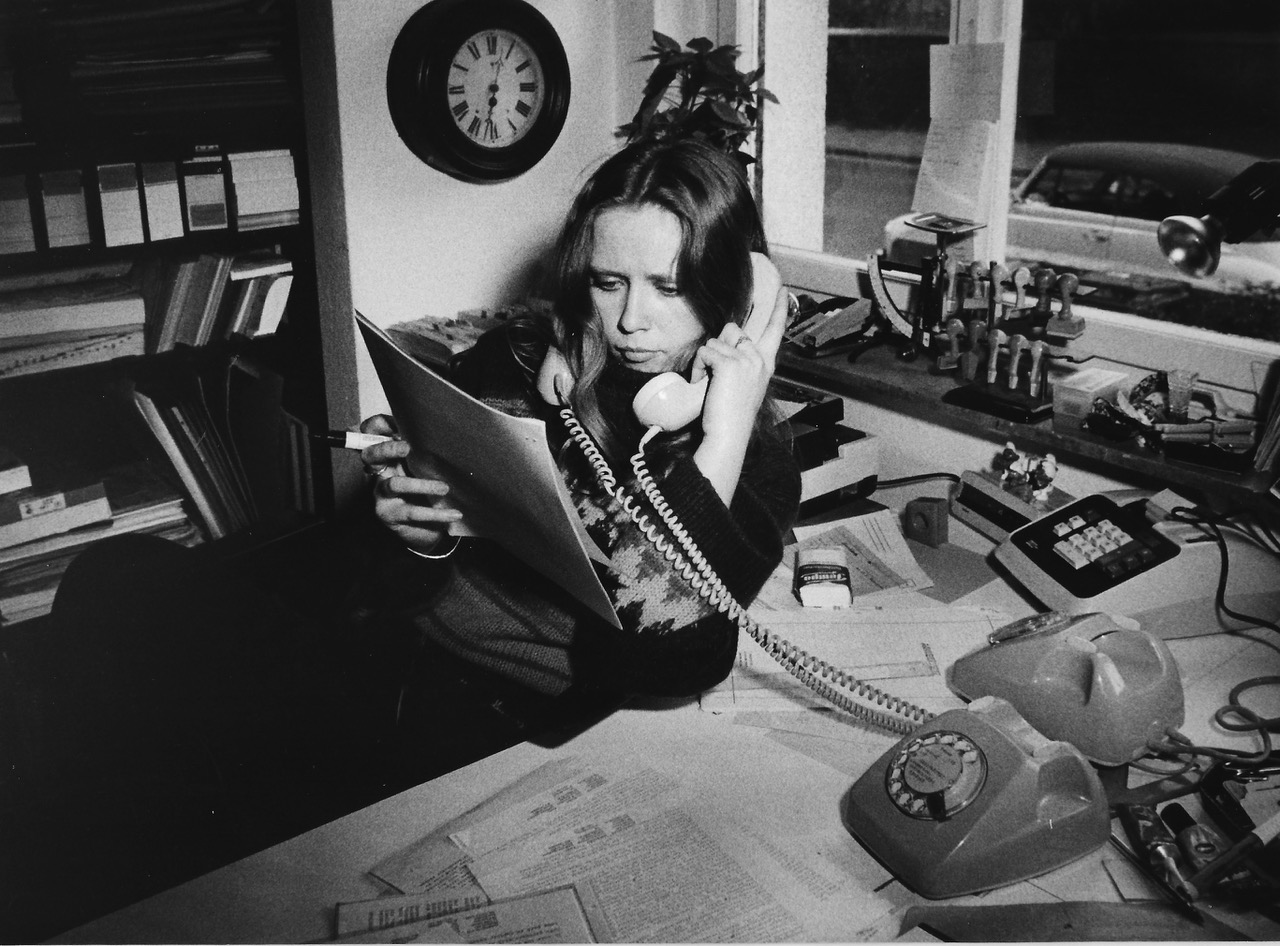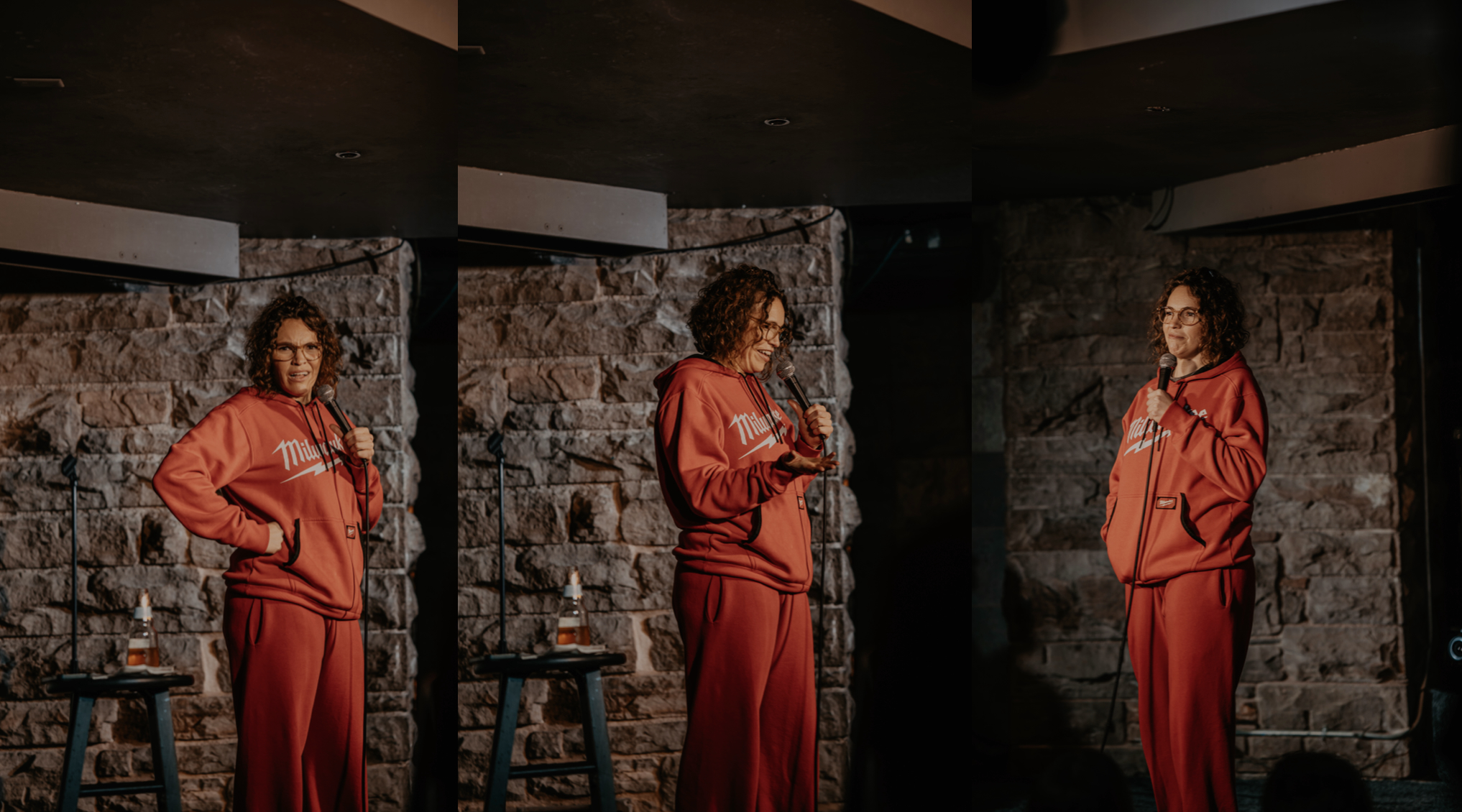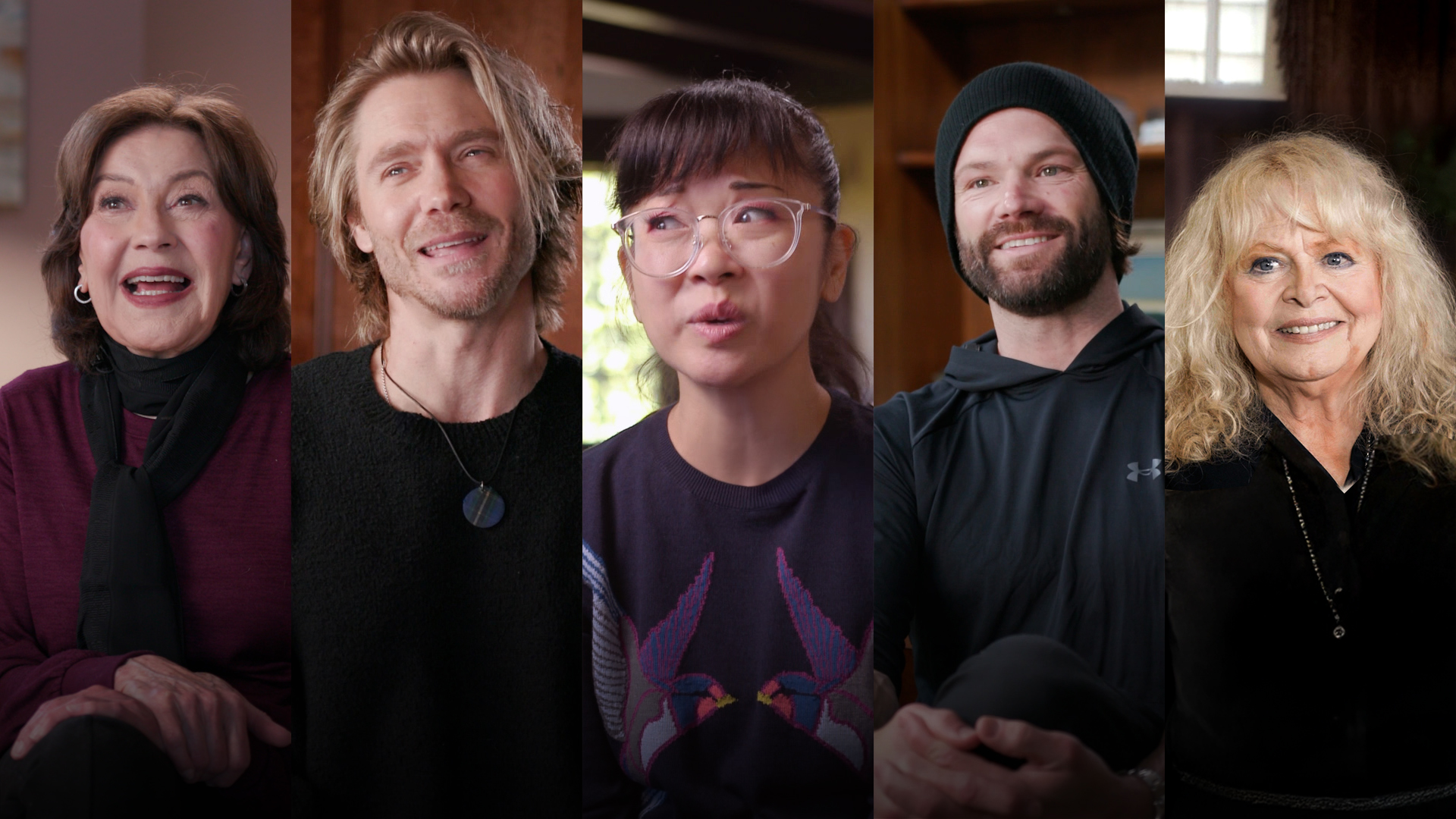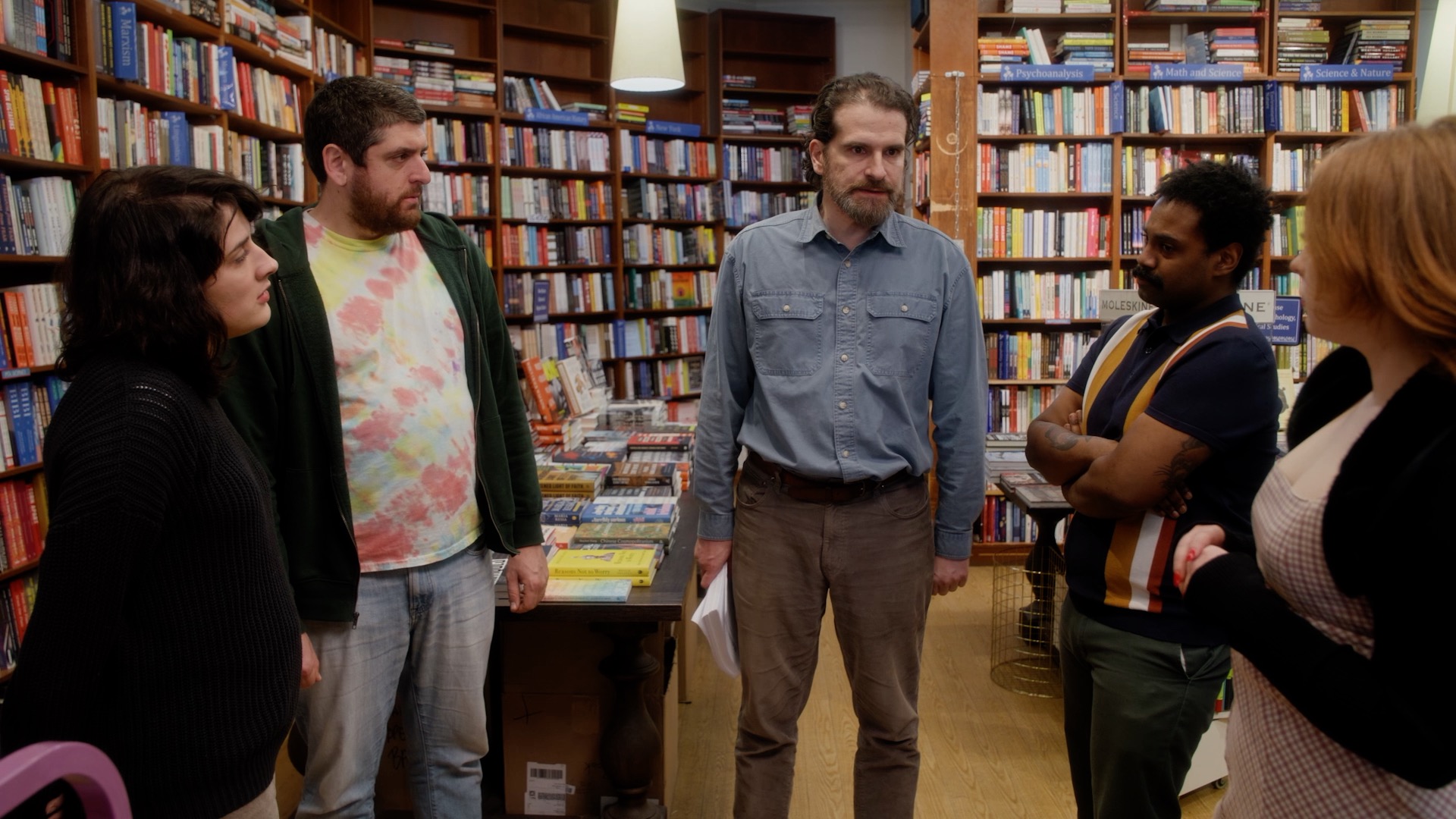
Released in time for Halloween and available on demand to get cozy during the holidays, renowned queer writer/director Jane Clark (‘Crazy Bitches’, ‘Meth Head’) unveils her latest feature, ‘Witchy Ways’, a supernatural romance that blends humor, love, and magic. Redefining the witch genre through a queer, contemporary lens, the film celebrates the belief that real magic lives in authenticity and love.
Distributed by Wolfe Video, ‘Witchy Ways’ is now available to buy or rent on Apple TV (US), Fandango at Home (US), Amazon Prime Video (US, UK, Australia), and on Apple TV in Canada, the UK, Ireland, France, Australia, New Zealand, Belgium, and Switzerland.
Written and directed by Jane Clark, ‘Witchy Ways’ continues her tradition of bold, emotionally resonant storytelling that bridges genre and identity. Her previous works, including the cult favorite ‘Crazy Bitches’ and the acclaimed ‘Elena Undone’, have established her as a distinctive voice in queer and independent cinema.
Eve (Diora Baird) is a high-powered brand manager who retreats to her late mother’s cottage, a place long rumored to be magical. There, she meets Danni (Marem Hassler) an enchanting neighbor who comes from a long line of witches. What begins as a reluctant friendship deepens into a romantic connection that challenges Eve’s sense of logic and control. When Danni’s home and legacy are threatened by a vengeful neighbor, Eve must decide whether to remain grounded in the world she knows or step fully into one of magic, love, and possibility.

The film features an acclaimed ensemble cast including Diora Baird (Wedding Crashers, Cobra Kai & Lifetime’s You’re Not Supposed to be Here), Marem Hassler (Riley Parra, Bone Tomahawk), Candis Cayne (Dirty Sexy Money and The Magicians), Guinevere Turner (American Psycho), David Fumero (One Life to Live and Starz’s P.O.W.E.R.), Marc Price (Family Ties, Trick or Treat), and Paul Fox (Ford v Ferrari.) Cayne, the first transgender actress to secure a recurring role on primetime television, adds depth and distinction to a cast that seamlessly combines star power with authenticity.
The idea for ‘Witchy Ways’ emerged from Jane Clark’s long-standing friendship with Marem Hassler. The two had been eager to collaborate, and when the opportunity arose, Clark began shaping a story that would intertwine witchcraft, humor, and queer romance. Influenced by ‘A Discovery of Witches’ and the tone and sisterhood of ‘Practical Magic’, Clark set out to create a film that honors both supernatural storytelling and emotional truth.
While researching modern witchcraft, Clark discovered a real and vibrant community that has often been misunderstood or marginalized. This realization became central to the film’s emotional core, aligning the experiences of modern witches with those of queer people seeking acceptance and belonging.
The film draws powerful parallels between modern witchcraft and the LGBTQ+ experience, reflecting shared journeys toward visibility, acceptance, and authenticity. Blending supernatural romance with a deeply human story of self-discovery, ‘Witchy Ways’ celebrates the courage to live one’s truth and the magic that comes from being fully seen.
‘Witchy Ways’ is more than a supernatural tale, it’s both a love story and a reclamation. In an interview about the film, Jane shared with us more about her personal connection to the story, what she loved exploring about the supernatural in ‘Witchy Ways’, and what she hopes especially queer audiences will love about this film.
Congrats on the release of ‘Witchy Ways’. What has the response been like so far?
Thanks! I love the film. If I saw the trailer or read about it, I’d want to see. But that is not a guarantee others will feel the same. Luckily, I’ve been gratified by the diversity of the fans – I mean, I was fairly confident the lesbian audiences would get it, and hopeful that the witchy audiences would be pleased to see themselves, but I am surprised to have heard positive feedback from a, let’s say, a more “dude” demographic.
What was the process of making this film – when did it begin? How did you come up with the story, and how long did it take to go from development to release?
This film started in December of 2022, during a break in Covid when bars had briefly opened back up. Marem (Hassler) and I met up for a drink and talked about how we always wanted to work together. And she enticed me, “I’ve just bought a brand new camera, I’ve got an amazing producer! I know a DP you’ll love! Let’s make a movie!” Obviously, it doesn’t take much to reel me in. The second cocktail might have helped her pitch, too.
Setting about writing, I decided to do something witchy. I had it mind to also have a ghost (not sure why!) and I decided there’s be a married lesbian couple, and one of them would be pregnant (also not sure where that pregnancy thing came from.) And I started with a much darker tone. I was going to have my friend, Guinevere Turner, play a woman who’s sister has died.
She expects to inherit her home and money, but finds out that instead the sister left everything to a distant niece which would have been Marem’s role. Guinevere is furious and when Marem and her wife arrive, GT plots to get rid of them. The sister is a ghost in the house working against her who turns out to be a witch with witchy powers.
But at that time, after writing the first thirty pages, I really wasn’t feeling it. I started watching a bunch of witch and ghost movies looking for inspiration, and I landed on ‘Practical Magic’. I loved the tone, the sisterhood, the way witchcraft was handled as a natural part of the character’s lives, and the way in a time of crisis even the women in the community who had made outcasts of the witches came together to help a woman in jeopardy. And the way the witches were treated – as “other” and less than – was a theme I could wrap my head around.
I had a script by April, a cast by May and money by September. That is a speed which is unheard of in a normal filmmaking process. It wouldn’t last. It has taken a very long time through some very extreme issues to reach this moment. I don’t know why. Maybe it was a journey I had to take. It has certainly taught me to approach problems with more equilibrium.
And as I’ve learned to accept the hits and move through with trust and patience, I have discovered on the other side of each, a better result. I’m a better person today on so many levels and the film is better for it as well.

As a renowned voice in Queer film, why is it important for you to have central characters and storylines that go beyond the heteronormative binaries that are still dominant in mainstream cinema?
I strive to tell truthful stories that are genuinely reflective my world – and that world is far more expansive than the narrow, heteronormative lens mainstream cinema still leans on. Queer people live, love, grieve, fight, make mistakes, and find magic every day just like everyone else. My goal is to make queer characters central to the story without making their queerness the conflict or even really the conversation. The relationships and tensions are driven by love, desire, family – insecurity, pain and fear – the same universal forces that move all of us.
And maybe it’s just me, but I think when we break out of binary storytelling and binary identities, the narratives themselves become richer. There’s more surprise, more depth, more humanity. A truer view of the world.
I also believe the more we normalize stories where queerness simply is, the more we expand empathy and dismantle the limitations that old systems have placed on whose lives are considered worth watching. The trick, especially as an indie filmmaker without a marketing machine behind me, is ensuring these stories reach beyond the “niche.” I’m working on that part.
Tell us about being inspired by ‘Practical Magic’ and ‘A Discovery of Witches’ for this story. What was it about the portrayal of witches that fascinated you?
I think it’s the power. Not just the power of control and creation, but the internal power that grows when women become more confident in what they can accomplish.
I also think it’s kind of sexy. Or maybe that’s saying the same thing. Because power is sexy, right?
There are a lot of parallels between the way witches have traditionally been perceived throughout history, and queer women in both historical and contemporary society. Can you say more about this?
That is something that I was very aware of as I began to research the role of the witch, Danni. I realized my understanding of witches had mostly come from the more cliché or traditionally cinematic portrayals. But when I did a deep dive, I discovered a large and growing community. I really fell in love with this rich spirituality and powerful ethos rooted in intuition, nature, and self-definition.
As I began to talk about that aspect of the film and what I was learning, something surprising happened. Friends I’ve known for years who opened up and shared that they were witches. That’s when the parallels in our contemporary society really struck me. Here was this entire community and I say community intentionally, because many men and nonbinary people identify as witches too – who still feel they can’t live their truth openly.
As to the historical aspect, when women claimed knowledge, pleasure, or independence on their own terms, they were labeled dangerous. Whether the word used was “witch” or “queer,” the purpose was the same — to control what society feared and did not understand. And unfortunately, that hasn’t entirely changed. The language may have evolved, but the policing of women’s power and identity is growing bolder every day.

What, if any, of your own story and journey did you draw from when you were writing ‘Witchy Ways’?
There are probably a lot of things in the story — as in all my writing — that I could point to as personal. But the most significant for me is the mother’s Alzheimer’s diagnosis and the impact it has on Eve. My own mother was a scientist (like Eve’s). She wasn’t an entomologist, but she was absolutely obsessed with birds — she knew all the species, all the calls. She even volunteered as a bird counter for the Audubon Society.
She was later diagnosed with Alzheimer’s. I’m fairly certain it began in her early sixties, even though the official diagnosis came years after. Up until the day she died, she would still go outside and watch the birds. She might not have known each name anymore, but that love lasted beyond memory — past the cerebral and into something deeply innate.
And I carry a regret that when there was still time, I didn’t ask her more about herself — her thoughts, her dreams — and then it was too late. I feel like I never fully got to know her.
Oh, and I secretly think she might have been a witch — she just didn’t have the chance or the language to explore that part of herself.
What do you hope audiences will resonate with most when they watch the ‘Witchy Ways’?
There are a lot of themes in the film – grief and release, connection to family, holding on to things that no longer serve, the fear of – yet deep desire for love. I hope that whatever someone is going through when they watch the film, one of these will resonate and give them comfort or a feeling of joy or hopefulness.
I also hope that when straight audiences watch this film they are moved and rooting for Eve and Danni to find love, not as a queer romance, but simply as, well, a romance.
What message do you have especially for queer audiences who love your work?
It’s the same message I have for anyone who still feels the sting of being othered: Walking in your own truth is where real power and possibility lies.
That’s the heart of ‘Witchy Ways’ – the magic doesn’t come from spells, it comes from being fully yourself.
You can watch ‘Witchy Ways’ on Apple TV (US), Fandango at Home (US), Amazon Prime Video (US, UK, Australia), and on Apple TV in Canada, the UK, Ireland, France, Australia, New Zealand, Belgium, and Switzerland. Follow Jane Clark on Instagram, and visit the Witchy Ways website.

















